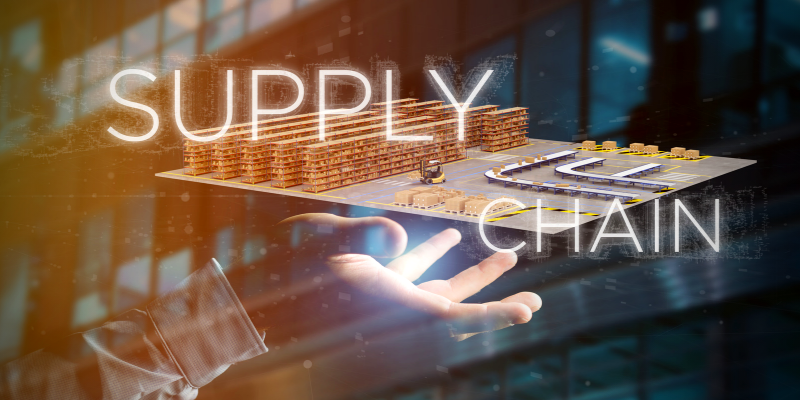
In today’s interconnected global marketplace, the safe and efficient transport of perishable goods stands as a constant challenge. From fresh produce to life-saving pharmaceuticals and vaccines, ensuring the continuous quality and safety of these products across the supply chain demands cutting-edge cold chain solutions.
These innovative approaches not only mitigate risks but also significantly boost operational efficiency, guaranteeing that temperature-sensitive goods arrive at their destinations in pristine condition.
‘Cold Chain Logistics,’ or simply ‘Cold Chain’, ensures precise temperature control for products from the manufacturer to end-user.
This framework involves careful management and transportation processes designed to maintain a consistent temperature environment. It spans a variety of items like fresh and frozen foods, vaccines, pharmaceuticals, and other goods necessary for health and safety.
Challenges in cold supply chain adoption
The adoption of effective cold supply chain solutions faces significant challenges, despite the robust growth projected for the global cold chain logistics market, expected to reach $647.47 billion by 2028 with a CAGR of 15.1% from $242.39 billion in 2021.
Infrastructure limitations pose substantial barriers, particularly the requirement for sophisticated cold storage facilities. These facilities are crucial for maintaining precise temperature controls from production facilities to distribution centers and retail outlets.
.thumbnailWrapper{
width:6.62rem !important;
}
.alsoReadTitleImage{
min-width: 81px !important;
min-height: 81px !important;
}
.alsoReadMainTitleText{
font-size: 14px !important;
line-height: 20px !important;
}
.alsoReadHeadText{
font-size: 24px !important;
line-height: 20px !important;
}
}

Investing in state-of-the-art refrigeration systems and strategically locating these facilities can minimise transit times and reduce risks associated with temperature variations. Technological complexities also hamper adoption, as integrating advanced systems such as real-time monitoring and data analytics requires substantial resources and expertise.
Moreover, the challenge of developing a skilled workforce proficient in handling perishable goods and adhering to stringent regulatory standards further complicates adoption efforts. Overcoming these challenges is essential for enhancing the efficiency, reliability, and sustainability of cold chain logistics amidst burgeoning market demand.
Preserving perishable value through advanced solutions
Advanced cold chain solutions are pivotal in preserving the value of goods prone to damage. Real-time temperature monitoring is fundamental in these advancements, providing continuous oversight of temperature conditions during transit and storage. According to industry insights, temperature variations can lead to significant spoilage and economic losses, emphasising the critical role of monitoring systems.
Data analytics further optimise cold chain operations by offering actionable insights into trends and potential risks. Logistics providers can use data-driven decision-making to handle difficulties ahead of time, increasing efficiency and lowering operational costs.
These analytics assist recognise future temperature fluctuations and offer ideal routes or storage conditions, ensuring the product’s quality along the journey.
The role of temperature monitoring and data analytics
Temperature monitoring devices equipped with IoT technology deliver real-time data on temperature and humidity levels.
This constant monitoring is crucial as even minor deviations from optimal conditions can compromise product quality. Advanced systems utilise cloud-based platforms to store and analyse data, enabling stakeholders to make informed decisions swiftly.
IoT-enabled sensors are particularly beneficial, offering real-time alerts and notifications. This capability allows for immediate corrective actions, significantly reducing the risk of product damage and waste. By enabling stakeholders to respond promptly to temperature changes, these systems bolster the reliability and efficiency of cold chain operations.
Addressing infrastructure limitations and investment needs
Investment in cold storage facilities is essential to bolster cold chain capabilities. These facilities, equipped with advanced refrigeration systems, are strategically positioned to ensure consistent temperature control and minimise transit times.
The efficient management of reactive goods within these facilities is crucial for preserving quality and safety throughout the supply chain.
Moreover, workforce training is essential for effectively handling temperature-sensitive goods. Training programs equip personnel with the necessary skills to monitor, manage, and respond to temperature variations throughout the logistics process.
By investing in workforce development, companies enhance operational excellence and uphold stringent product quality standards.
The future of cold chain logistics
The cold chain infrastructure for temperature-sensitive goods, including horticultural produce, is underdeveloped in India compared to Western countries. As a result, almost 20-30% of perishables are wasted due to the limited use of cold chain logistics for transporting these products.
In the USA, approximately 80-85% of fruits and vegetables are moved through the cold chain, while in India, this percentage is significantly lower. There is tremendous potential for developing cold chain infrastructure in the country to reduce wastage and improve the efficiency of perishable goods transport.
With the country’s current cold chain market size at $35 billion and expected to reach $50 billion by 2027, strategic investments are more critical than ever.
Looking forward, blockchain technology and AI promise to revolutionise cold chain logistics. Blockchain ensures transparent tracking of products, enhancing traceability and accountability. AI algorithms enable predictive analytics, optimising routes and minimising risks from climate adjustments.
These innovations safeguard products, streamline operations, and reduce costs. Adopting these advancements upholds quality standards, meets consumer demands for safety and freshness, and leads to sustainable growth in global trade. As technology evolves, the future of cold chain logistics holds exciting possibilities for enhancing sustainability and reliability in delivering perishable products worldwide.
Swarup Bose, Founder & CEO at Celcius Logistics
(Disclaimer: The views and opinions expressed in this article are those of the author and do not necessarily reflect the views of YourStory.)


![Read more about the article [Funding alert] ShareChat joins the unicorn club with $502M funding from Lightspeed Ventures, Tiger Global](https://blog.digitalsevaa.com/wp-content/uploads/2021/04/Founders-Farid_Bhanu_Ankush-300x150.jpg)




![Read more about the article [Funding alert] Bizongo raises Rs 825 Cr in Series D round led by Tiger Global](https://blog.digitalsevaa.com/wp-content/uploads/2021/11/H1-2018-FEATURE-IMAGE2-1632382493946-300x150.png)


